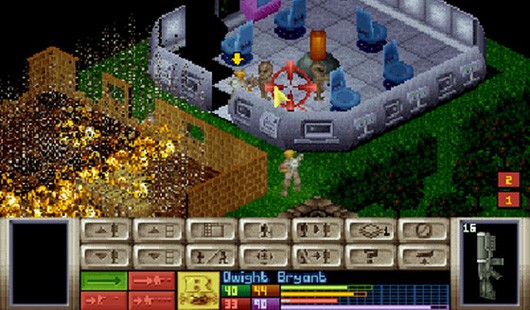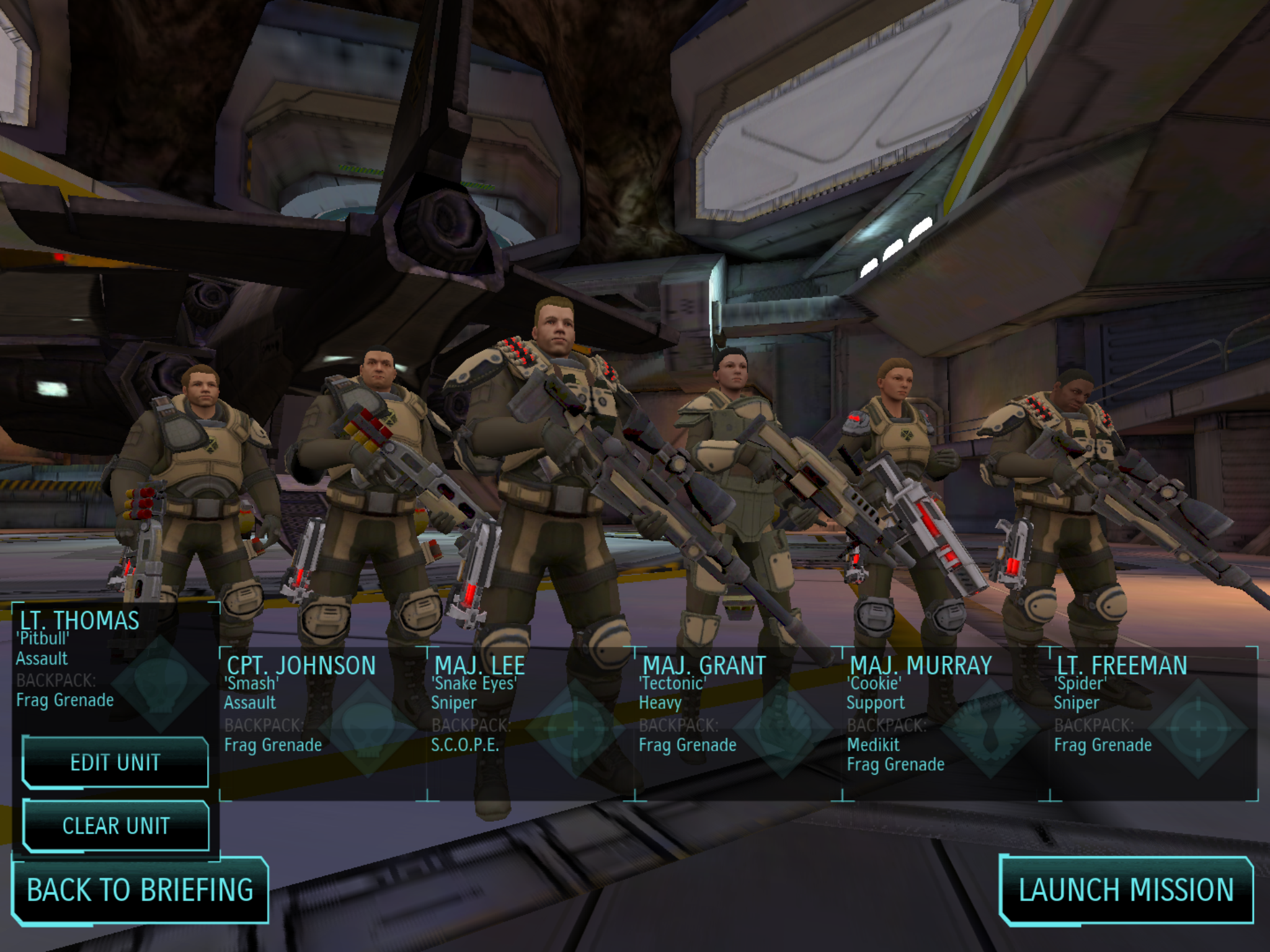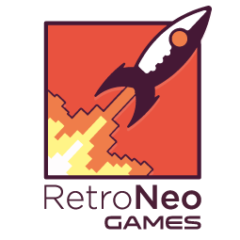Hi! This is part 2 of me offering some insight into the creation of Sons of Sol: Crow’s Nest. In Part 1 I talked about my “Asteroids meets Total War” pitch and what, exactly, the hell that meant.
This week I’ll be basically talking about some of the games that are having a big influence on the development of Crow’s Nest. If you’re a space and/or strategy game fan, this may be of interest to you. Fair warning; there’s going to be a lot of Star Wars games in here!
These aren’t “games that are similar to my game”, but instead they make up more of a history of the games that I have personally played that influence Crow’s Nest in some way.
First up..
Asteroids (1979)

Last week I talked a bit about this and Total War as influences so I’ll be brief. Here is one of the very original space shooters, and a classic game. There’s the three-life formula with a single hit and you’re dead. There’s extra lives, speed, intensity, high scores, and great use of limited technology to deliver imaginative graphics. The key ingredient to itss addictiveness is the quick restart. You can instantly hop back in for another round to try and beat your previous high score. It’s a simple, but proven method of keeping players pumping in quarters (or nowadays, playing and seeing advertising).
The computer room in my school when I was a kid had this on some machines so I’d race through our typing lessons so that I could play. In years since I see it every now and again as a web link and I always click in for a few rounds. The thrill of dodging through asteroids at high speeds and evading incoming laser shots never gets old, and it’s a mechanic that I’m endeavouring to capture in Crow’s Nest.
Total War series

Again, I talked about Shogun specifically last week, but to reiterate, I loved the two-sided approach to a strategy game. Until Shogun, I’d only played strategy games like Command & Conquer (C&C) where you fight one battle at a time and it never influenced the next battle. It didn’t matter how many losses you took in exchange for victory, and if you lost you would just restart the level. In Total War, you finally could say “we may have lost this battle, but we’ll win the war” and it would mean something.
At the time, I was unaware that XCOM had been doing this since 1994, and there were probably several other games too, but this was my first and the experience of playing Shogun for the first time shaped how I would view games forever more. Now, as a designer, the strategic depth of Total War and games like it is something I want to incorporate into my games whenever possible.
I also liked how special units could affect the war. Diplomacy and assassinations could drastically change the course of the war. I’ve always kept in mind the influence that special units could and (I think) should have on a strategy game.
X-COM series

There were a whole bunch of XCOM games starting with 1994’s original, but the series wasn’t well managed, wasn’t always in the hands of the original creators, and really took a dive until the 2012 remake by Firaxis and 2K, ‘XCOM: Enemy Unknown’. When the latter was announced, it was the first time I really noticed the series. I’d never played it. I picked up the original before the release of the remake, and played both games in 2012. My world changed!
I’d always avoided turn-based strategy games. I just had never liked the few examples I’d played. I thought they were too unrealistic because you wind up with two soldier just looking at each other instead of fighting. What I didn’t appreciate was that in the moments between the action, when you’re making your decisions like in a chess match (ironically, I loved chess), you’re getting a whole different type of gameplay. Instead of trying to simply react quickly like in an RTS, you’re really trying to solve a problem in the most efficient way possible (like a puzzle game) but with the added element of random chance getting in the way of your best laid plans. RTS games have this plus speed, but turn based games forego the speed in favour of really making you think about the consequences of your actions.
I’ll be talking next week about a design challenge that this posed to my game. The turn-based element buys you gravitas insofar as the player has made every move and so they have nobody to blame for the consequences. In any real-time game where you have allies, they’ll likely by controlled by the AI, and if they die you may be inclined to blame the designer or the AI, and not your own command skills.

What I love about XCOM is the same thing that I love about Total War: persistence! The game allows you to fail and recover, not just restart. What XCOM does that Total War doesn’t really do is make you care about individual soldiers. In dealing with small squads over dozens of missions (and especially if you choose to name and customise them yourself) you get to form relationships with individual soldiers. Sending your best veteran sniper into a risky situation to try and rescue your best medic is a weighty decision that C&C or Total War can’t really deliver. The tension is immense because the consequences are permanent. That means that success is vastly more rewarding here than in normal games. You’re always glad to see troops come home alive. The range of emotions you can evoke in the player is what earns the XCOM series such devoted fans.
I also loved the base management, particularly in the original game (or the fan-made Xenonauts (2014)). Having to actually buy replacement rockets, bullets, grenades, and med packs may have been too heavy on the micromanagement side, but then again, a shortage of finances really affected your tactical options when you went into battle. You might fire a rocket to keep your troops safe from an ambush, but you wince as you see thousands of credits go up in smoke! Also in those games I loved that your home base could be attacked, but may not be. 2012’s XCOM and its expansion Enemy Within didn’t have this. EW had one mandatory base attack mission. In the other games you could attack enemy bases or leave them be, and they could do the same to you. Each side could have more than one base, but they were expensive to run. The decision was up to you!
I haven’t decided how many of these design influences will appear in the strategy layer of Crow’s Nest, but some of them definitely will.
Star Wars: X-Wing series (1993-1999)
Now we get to the combat influences! I’ve said before on this blog that 1993’s X-Wing was my first ever game. I played the hell out of it! Its sequels TIE Fighter, X-Wing vs TIE Fighter, and X-Wing Alliance were also hugely influential for me.
I must acknowledge that, like many of the Star Wars games, these were cashing in on the popularity of other games. Wing Commander (1990) paved the way for X-Wing. Lucasarts said “we could do that, but with iconic Star Wars ships, music, and sound. People will go insane for it!” So my influence’s influence was really Wing Commander, but I never actually played any of them until I backed Star Citizen and started looking up Chris Roberts’ older games.
Tragically, X-Wing Alliance (1999) remains the last game in this series, but it’s one of my favourite games of all time. The series centred around dogfighting in the Star Wars ships, exclusively in space. Alliance was the first one where you could fly bigger ships like the Millennium Falcon, jump sectors in hyperspace during a mission, or dock with craft to rearm or “board” them (you just sat in the turret while other people on your ship supposedly did the boarding, but it was still cool).

It had over 50 missions and (what I thought) was a great story set alongside the events of Empire Strikes Back and Return of the Jedi, culminating in you (changing characters to Lando) flying the Millennium Falcon in the Battle of Endor, all the way inside the second Death Star!
Wing mates would take your orders, get chatty with you, call for help, and taunt the enemy! That’s not unique to this game, or anything, but it adds greatly to the atmosphere and it’s in Crow’s Nest too!
The briefings, the mission types, the dramatic set-pieces, the in-game reinforcements and dramatic turnings of the tide of battle are all fresh in my memory and are heavily influencing the way I’m designing the combat missions of Crow’s Nest. While Alliance was a linear game, and mine is more dynamic, I feel I can still deliver a lot of the same drama, action and intensity but with the added benefits of the tension gained from the possibility of loss.
The one major thing I wanted to change is that in 3D space you see very little of the battle. When an enemy goes past you you lose sight of them. When a big ship explodes spectacularly, you may not be looking in the right direction at the right time to see it. I wanted to take 3D space combat games and put them in 2D so you have greater situational awareness and can see more of the action! That’s my big departure, but otherwise, the combat in Crow’s Nest is heavily influenced by the X-Wing games; far more so than it is by your average top-down space shooter.
Star Wars: Rogue Squadron (1998)

The original was out on the N64, and later the PC. Two sequels came out on the Gamecube too. These were also 3D Star Wars ship combat games, but now mostly focussed on planetary combat, against TIE Fighters & ground units, instead of TIE Fighters & Star Destroyers.
If you played these games and the current Crow’s Nest demo, my big take-away from Rogue Squadron should be obvious: The orders system.
You have two wing mates with you most of the time and they can largely take care of themselves, but you can give them a few orders on the D-pad. D-up is to “Form Up” and they increase your overall fire power by flying on your wing and shooting when you shoot. I’ve used this order directly (it’s not stealing if you declare the influence, right?) as well as the ability to keep your wing mates safe by telling them to retreat. Beyond that, the orders system starts to differ, but feeling like you’re not alone is important to a game where you play a fighter squadron, and Rogue Squadron handled it well!
Middle Earth: Shadow of Mordor (2014)

Can anyone have played this game and not loved the nemesis system? This Lord of the Rings game has you play a human Ranger & elven ghost (sharing the same body) and travel around Mordor… eh, doing things.. revenge, mostly. It played a bit like the Batman Arkham games in the fighting systems and like many open world games otherwise, but the nemesis system stood it apart, and it even won a few Game Of The Year Awards.
In the picture above, you can see one of dozens of enemy commanders. These exist in a ranking hierarchy. You can “ally” with some of them and assist their rise to power in order to get rid of certain other nemeses in the game.
Each nemesis (as long as they’re alive, anyway) will remember having met and fought you, and they’ll comment on the result of that battle. As seen above, they all have different strengths and weaknesses. At first, these are unknown to you but you can interrogate underlings and rivals (forgive me if I’m not exactly right, there) to learn these traits. For example, a nemesis might have beaten you down the first three times you tried to fight him, then you learn he’s afraid of a ‘caragor’, so you show up riding on the back of one and he’ll flee with his tail between his legs! Another nemesis might hate caragors, and so this same tactic would only enrage him, boosting his stats!
This latter part of the system is something I’m interested in implementing into Crow’s Nest. You will benefit from spying on enemies by learning things about their movements, or what types of ships they favour using. You could just approach the battles blind, but intel gathering will pay off.
I don’t necessarily plan to have you ally with factions or control pirate groups, but I’m at least taking inspiration from the nemesis system insofar as learning about your enemy and having them remember you goes.
Honorable Mentions
Star Wars: Empire At War (2006)

This is one of my favourite strategy games ever, especially the two player competitive campaign, but there’s not so much I’m taking from it that I didn’t already credit Total War for.
Your armies persist across a galaxy map, space map, AND individual planetary maps. It’s very unlike Empire at War, though, because you control fewer units. The loss of the only Star Destroyer you may have in your fleet really hurts, even if you win the battle. You can steamroll the enemy for a while, but you’re taking losses as you go and will run out of steam, thus having less units left to defend your new territories from counter-attack.
The land maps also host buildings like Ion Cannons or Hypervelocity Guns which can be used by the defending team in the space battle above that planet. If you are wise, you might raid the planet with a small force (small raid forces can bypass the space battle) with the sole aim of destroying that one building before launching your space battle. If you hold the space above the planet, you can hit the land battle with bombing runs and orbital strikes. This interplay of systems is another great example of what multi-layered games can achieve.
X-COM: Interceptor (1998)

I only played this for the first time in 2015, and development on Crow’s Nest was already well underway. It’s not far off what I’m doing, as it turns out, but nobody thought this game was all that it could be either.
You command a base on a strategy map and manage its resources, as with other XCOM games, but instead of the turn-based battles you have a fighter ship battle. The problem is that these battles were nearly all the same and they got very repetitive.
The only influence I’m taking from this game is in what not to do. I need to ensure missions in Crow’s Nest are varied enough, and that there are real characters and stories playing out during the campaign. To what extent, I don’t yet know, but this is a good example of a game relying 100% on its systems producing all the gameplay.
Star Citizen (20??)

How can I make a space game in 2015 and not be influenced by Star Citizen/Squadron 42? That said, my game is a single-player war game, not a multiplayer space-everything game. I’m very excited for Star Citizen, but even moreso for the single-player side, ‘Squadron 42’. If we get to play S42 early next year I imagine it might influence Crow’s Nest somewhat, but probably not in many ways that X-Wing and Wing Commander haven’t already. If the game takes longer than that to come out, Crow’s Nest may already have been released. Time will tell.
So!
I could also mention FTL for its art style, actually, but the art in Crow’s Nest so far is just my placeholder stuff and I don’t believe that I can draw. I certainly won’t be the final artist, so it’s not worth mentioning visual influences at this stage, really.
I’ve found that when making a game, a lot of people will come and say “oh, you must have been influenced by this” or “have you played that”? There are so many games out there that chances are the answer will be “no, actually. I haven’t heard of that one”. I’ve listed my main influences here, and very few of them are actually 2D space games.
If there’s anything you think I should check out, either because it’s similar to what I’m doing or just because it rocks, please let me know!
Next week I’ll be focussing on a design challenge posed by trying to do some of what XCOM does in a real-time action game. If that sounds interesting to you, please subscribe to the RetroNeo Games Facebook or Twitter accounts (link icons at the top and bottom of this page).
Until next time..




